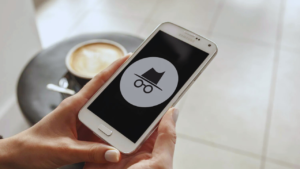Incognito mode is a useful feature in web browsers that allows users to browse the internet privately without saving history, cookies, or site data. However, many Android users wonder if they can retrieve their incognito history after closing their browser. While browsers like Chrome and Firefox don’t store incognito history, some methods can help you access traces of your browsing activity. Network monitoring tools, router logs, and third-party apps may provide insights into sites visited during incognito mode. Additionally, Android’s DNS cache may retain temporary records of browsing activity, which can sometimes be accessed through system settings or command-line tools.
Understanding these options can be useful if you need to check your browsing history for security reasons or parental monitoring. However, it is important to note that accessing incognito history without consent may raise privacy concerns. I will discuss and explore the most effective ways to check incognito history on an Android device and the limitations of each method.
What is Incognito Mode on Android?
Incognito mode is a private browsing feature available on Android devices that prevents the browser from saving your browsing history, cookies, site data, and form inputs. This feature is useful for maintaining privacy while browsing. However, there are instances where you may want to check incognito history for various reasons, such as parental control, monitoring device activity, or retrieving previously visited pages.
Comparison of Regular Browsing vs. Incognito Browsing
| Feature | Regular Browsing | Incognito Browsing |
| Saves Browsing History | Yes | No |
| Stores Cookies & Cache | Yes | No |
| Saves Form Data | Yes | No |
| Tracks Downloads | Yes | Yes |
| Requires Login for Websites | Yes | Yes |
| Search Activities Visible to ISP | Yes | Yes |
| Accessible After Closing Browser | Yes | No |
Is It Possible to View Incognito History on Android?
Although incognito mode is designed to prevent browsers from storing history, some traces of browsing activity may still be accessible on an Android device. While the browser itself does not retain a record of visited sites, the system’s DNS cache, network logs, and router history may temporarily store information about accessed websites. These records can sometimes be retrieved using certain methods, such as checking the DNS cache through command-line tools, reviewing router logs, or using third-party monitoring apps designed for parental controls or cybersecurity.
However, it is important to note that accessing incognito history may be limited based on device settings, security measures, and privacy policies. Some monitoring tools require root access or administrative privileges, which might not be feasible for all users. Additionally, many websites use HTTPS encryption, making it harder to track specific browsing details. I will discuss and explore different ways to check incognito browsing history on Android, the limitations of each method, and privacy considerations to keep in mind.
Methods to View My Incognito History on Android Phone
Even though incognito mode prevents browsers from saving history, there are still ways to track visited websites through router logs, third-party apps, and system settings. These methods allow users to retrieve browsing activity for security monitoring, parental control, or personal review. Below are some of the most effective ways to check incognito history on an Android phone.
Checking Router Logs
Most Wi-Fi routers keep a log of visited websites, even if the browsing was done in incognito mode. Since all internet activity passes through the router, checking its logs can help retrieve browsing history. Follow these steps:
- Open a web browser and enter your router’s IP address (e.g., 192.168.1.1 or 192.168.0.1).
- Log in using the administrator credentials (the default username and password are often found on the router label).
- Navigate to the Logs or History section in the router’s settings.
- Check for the list of recently visited websites.
Keep in mind that not all routers store history logs, and some may require specific configurations to enable tracking.
Using Third-Party Apps
Various third-party monitoring apps can help track browsing history, including incognito mode activity. These apps are often used for parental control, employee monitoring, or personal tracking. Some popular options include:
| App Name | Features | Compatibility |
| KidsGuard Pro | Tracks browsing history, GPS, call logs, and app usage | Android & iOS |
| iKeyMonitor | Monitors keystrokes, captures screenshots, and records website visits | Android & iOS |
| Famisafe | Tracks web activity, blocks sites, and sets screen time limits | Android & iOS |
These apps often require installation on the target device and may need certain permissions for full functionality. Always use them ethically and with consent if monitoring someone else’s device.
Checking DNS Cache on Android
The DNS cache temporarily stores website addresses visited on the device. Follow these steps to view it:
- Open Terminal Emulator or Command Prompt on Android.
- Type ipconfig /displaydns and press enter.
- A list of visited websites will appear.
Using Google My Activity
If you are logged into a Google account while browsing, Google may store your activity even in incognito mode. To check:
- Go to myactivity.google.com.
- Sign in with your Google account.
- Navigate to Web & App Activity to view search and browsing history.
Installing Monitoring Software
Installing monitoring software allows for continuous tracking of incognito history by running in the background and logging browsing activities. These applications can capture visited websites, timestamps, and even keystrokes, depending on their features. Many parental control and employee monitoring tools offer such functionality. However, using these programs may raise privacy and ethical concerns, so consent and compliance with legal regulations are essential. Always ensure responsible usage to balance security and personal privacy.
Additional Tabular Comparison of Monitoring Software
For users who require continuous tracking of incognito browsing, installing monitoring software is an option. These applications run in the background and log browsing activities, keystrokes, and other user data. Below is a comparison of some of the most commonly used monitoring software:
| Software | Features | User-Friendly? |
| mSpy | Tracks browsing history, messages, and GPS location | Yes |
| Hoverwatch | Logs browsing activities, call records and camera usage | Yes |
| FlexiSpy | Advanced tracking, including keylogging and remote access | Yes |
These apps typically require installation on the device being monitored and may need administrative permissions. They are commonly used for parental control, employee monitoring, or personal tracking but should be used ethically and with the necessary consent.
Wrapping Up
While incognito mode is designed to keep browsing history private, there are still ways to retrieve some traces of activity through DNS cache, router logs, or third-party monitoring tools. These methods can be helpful for users who want to review their browsing history for legitimate purposes, such as retrieving lost links or monitoring a child’s internet activity. However, it’s essential to respect privacy guidelines and understand the limitations of each method. Most browsers intentionally clear history and cookies in incognito mode to protect user privacy, making it difficult to recover full browsing details. If you’re concerned about tracking internet activity, using parental control apps or router-based monitoring solutions may be more effective.
Ultimately, while some traces of incognito history may be accessible, complete recovery is not guaranteed. For enhanced privacy, using a VPN or private search engines can further protect your browsing activity. Stay informed and use these methods responsibly to balance privacy and security on your Android device.
FAQs
Can I recover deleted incognito history on Android?
Yes, you can retrieve deleted incognito history using various methods such as DNS cache, Google My Activity, or router logs. The DNS cache temporarily stores website data, which can sometimes reveal past activity. Google My Activity may still retain search history if you were logged into a Google account while browsing. Additionally, router logs record internet activity from connected devices, making them useful for tracking incognito browsing history.
Are there free tools to view incognito history?
Yes, some free tools can help access incognito browsing history, but with limitations. For example, Terminal Emulator for Android allows users to check the DNS cache, which may reveal recently visited websites. Google My Activity provides a record of searches and activity if the user was logged into a Google account at the time. However, many advanced tracking apps that offer detailed reports and real-time monitoring usually require a paid subscription for full access.
Can parents monitor their child’s incognito history?
Yes, parents can track their child’s incognito browsing history using parental control apps. Apps like KidsGuard Pro, Famisafe, and mSpy log browsing activity, block inappropriate websites and track online behavior. Additionally, router logs can provide insight into visited websites, even if the browsing was done in incognito mode. For better security, setting up monitoring software on the child’s device ensures that parents can oversee their online activities.
Does using a VPN affect incognito history tracking?
Yes, a VPN significantly affects incognito history tracking by encrypting internet traffic. This makes it difficult for ISPs, routers, or monitoring software to log visited websites. Even if someone tries to track your activity through DNS cache or router logs, they will mostly see encrypted data instead of actual sites. However, if you are logged into a Google account, Google My Activity can still record your search history, even while using a VPN.
Can employers track incognito browsing on work phones?
Yes, employers can track incognito browsing on work phones if monitoring software is installed on the device. Many corporate networks also log web activity, and company routers may store details of visited websites, even when using incognito mode. While a VPN can help reduce tracking, it does not guarantee complete privacy, as employers may still use device management tools to monitor browsing behavior. Always assume that work devices are being monitored.
Is it legal to check someone’s incognito history?
The legality of checking someone’s incognito history depends on the context and local laws. Employers are legally allowed to monitor company-owned devices, and parents can track their children’s activity for safety reasons. However, accessing someone else’s browsing history without their consent, especially on personal devices, may violate privacy laws. It is essential to check local regulations before attempting to track or monitor another person’s online activity.
How can I prevent my incognito history from being tracked?
To enhance privacy and prevent tracking of incognito history, consider using a VPN to encrypt your internet traffic. Regularly clearing the DNS cache and disabling Google activity tracking can also help minimize stored records. Avoid logging into accounts while browsing in incognito mode, as platforms like Google still track activity when signed in. Additionally, using privacy-focused browsers like Brave or DuckDuckGo reduces tracking and enhances anonymity.







